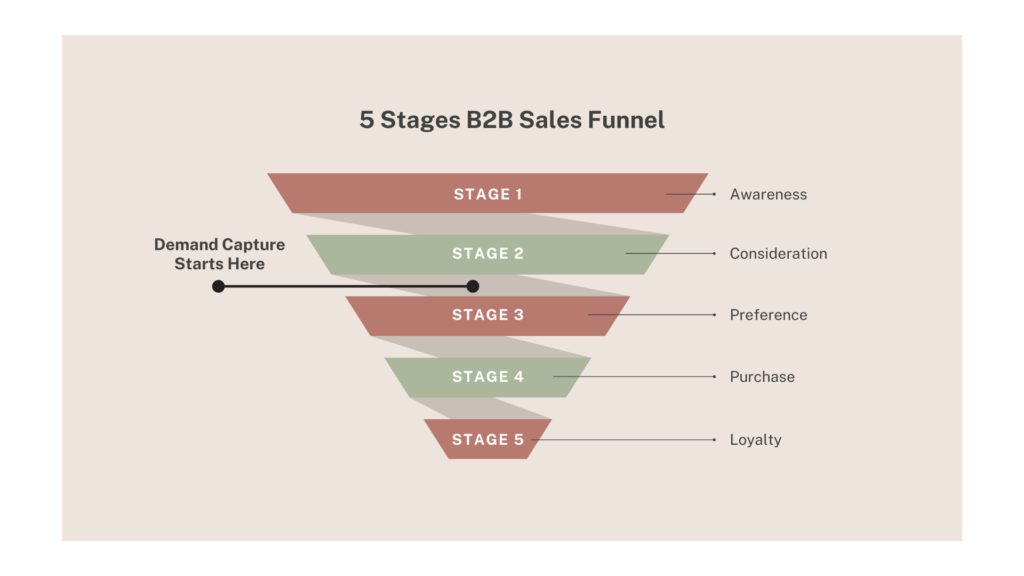In the world of marketing, terms like “demand capture” and “demand creation” are often thrown around interchangeably. However, understanding the nuanced differences between these two concepts is crucial for any effective go-to-market (GTM) strategy. Without that understanding, you’re likely stuck running strategies and tactics that won’t perform as well as they could, and overly blur the line between the purpose and role of each GTM strategy.
What is Demand Capture?
Demand capture is about identifying and capitalizing on existing demand in the market. This involves recognizing the needs and wants that consumers already have and positioning your product or service as the solution. The focus here is on immediate sales and quick conversions. This is best introduced after you’ve gained enough trust that they consider you and have you as their preference to do business with.
Key Characteristics of Demand Capture:
- Short Sales Cycles: The aim is to convert potential customers quickly.
- Highly Targeted: Marketing efforts are focused on consumers who have already expressed interest or are actively searching for a solution.
- Tactical: Utilizes methods like search engine marketing (SEM), pay-per-click (PPC) advertising, review sites, and retargeting campaigns.

What is Demand Creation?
On the other hand, demand creation is a more strategic, long-term approach. It involves creating a need for your product or service where none previously existed. This is often achieved through educational content, brand storytelling, and thought leadership and is the focus of the first two stages of the B2B buyers’ journey.
Critical Characteristics of Demand Creation:
- Long Sales Cycles: The focus is on nurturing relationships and building trust over time.
- Broad Targeting: Marketing efforts aim to reach a wider audience, including those who may not yet recognize their need for your solution.
- Strategic: Utilizes methods like content marketing, social media campaigns, and influencer partnerships.
The Difference and Why It Matters
While demand capture is about “harvesting,” demand creation is about “planting seeds.” The former is reactive, targeting consumers already in the buying cycle. The latter is proactive, aiming to enter the consumer’s consideration set before realizing they have a need.
Understanding the difference matters because each approach requires different tactics, metrics, and even team skills. For example, a demand capture strategy may focus on optimizing for keywords and improving landing page conversions. In contrast, a demand creation strategy might prioritize creating high-quality content and building brand awareness.
Balancing Both in Your GTM Strategy
For a well-rounded GTM strategy, balancing demand capture and demand creation is essential. While demand capture can bring in quick wins and immediate revenue, demand creation builds a sustainable, long-term customer base.
- For Startups: If you’re a startup with a disruptive product, you may need to focus more on demand creation to educate the market.
- For Established Brands: If you’re an established brand in a competitive market, demand capture tactics can help you stand out and grab market share quickly.
Conclusion
Demand capture and demand creation are two sides of the same coin – demand generation. Both are essential for a successful GTM strategy but serve different purposes and require different approaches. By understanding these nuances, you can create a more effective and balanced marketing strategy that captures existing demand and creates new opportunities for growth.
So, the next time you’re outlining your GTM strategy, take a moment to consider how you can effectively incorporate both demand capture and demand creation. Your bottom line will thank you.


